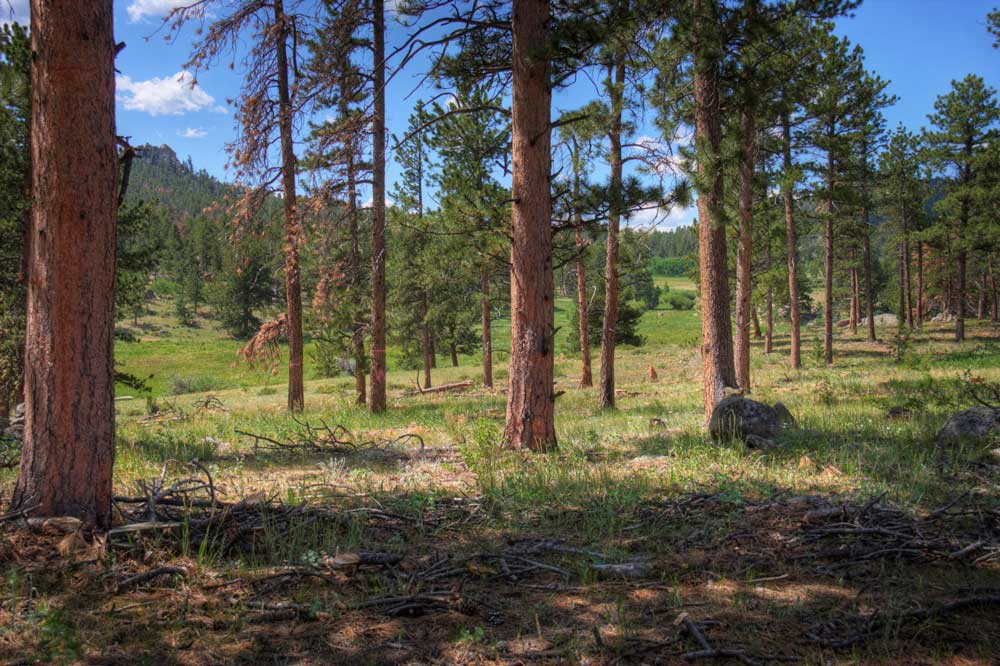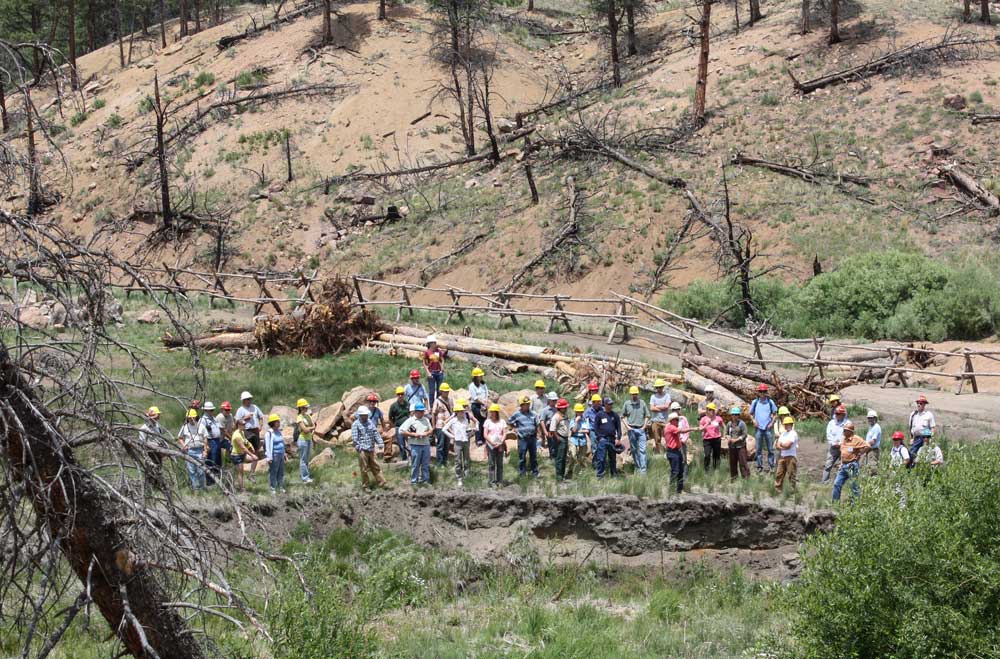A newly released roadmap led by the Colorado Forest Restoration Institute at Colorado State University provides clear, specific guidance for restoring the health of Front Range ponderosa pine forests.
The Institute, or CFRI, along with collaborators from a dozen local organizations, recently capped a multi-year effort to compile and translate the latest, locally relevant science about forest restoration. The result is a new General Technical Report called “Principles and Practices for the Restoration of Ponderosa Pine and Dry Mixed-Conifer Forests of the Colorado Front Range.’” This synthesis is available through the U.S. Forest Service’s Rocky Mountain Research Station.
The document is the most comprehensive science synthesis of these forests to date. It aims to provide forest managers and local residents with a common set of practical steps they can use to improve the overall resilience of 2.5 million acres of land managed along Colorado’s urban corridor.
Similar reports synthesizing locally-relevant scientific knowledge have been developed for forests in California, Oregon, Washington, New Mexico, and Arizona. Local forest managers have used these documents to steer forest restoration efforts in the past, but found that unique ecological conditions in Colorado’s Front Range forests weren’t being addressed.

“Factors shaping forest structure and composition – things like climate, topography, soils, and natural disturbances like fire – are different on the Front Range,” said Rob Addington, lead author of the paper, who was a researcher previously with CFRI and is now a landscape ecologist with The Nature Conservancy.
“We wanted to account for variations in local ecological conditions and incorporate them into treatment planning and implementation in this guide,” he said.
Since the 1860s, the Front Range’s social and ecological histories have impacted each other. After more than a century of human settlement into forests, fire suppression and periods of drought, managers are concerned that these ecosystems may not continue buffering the effects of intensifying disturbances like the recent bark beetle epidemics and severe wildfires.
“Fire has naturally changed Front Range’s forests over space and time, and there are values and services we derive from these forests that impact the well-being of our communities,” said Tony Cheng, CFRI director and a co-author of the guide. “Our concern is that future wildfires are likely to alter these ecosystems so much that we’re going to lose these services for a very long time, unless we try something different in terms of restoration.”
Scientists and managers who worked on this effort knew they needed to conserve services such as clean water and wildlife habitat, while also considering the current social values for forest residents and visitors. The collaborative nature of this report was an effort to bring Front Range scientists, managers, and private landowners together around principles that focus on these shared values.

The report answers why restoration is needed, and, more importantly, how those on the ground can maximize the value of their operations. The roadmap outlines a seven-step process to guide managers in identifying needs, developing clear goals, and building science-based management plans. It also includes ways to implement and monitor on-the-ground projects in ways that foster continuous learning and improvement.
“This document really clarifies the scientific foundation upon which managers can continue making strategic restoration decisions,” said Cheng, also a professor in the Department of Forest and Rangeland Stewardship. “We can either help guide the changes needed to make forests more resilient, or everyone will have to deal with what might be drastic changes severe wildfires and disturbances will deliver if we don’t act.”
Addington, Cheng and other scientists will continue to brief leadership teams from the Arapahoe and Roosevelt, and Pike and San Isabel national forests throughout the spring. The team hopes, in turn, that this will result in visible and relevant changes that the public will begin seeing on the ground.
Cheng emphasized that forest restoration is a long-term proposition, and measurable, ecological outcomes and benefits will take time.
Funding for this project was provided by the U.S. Forest Service. Collaborating organizations include the U.S. Forest Service Rocky Mountain Research Station and Rocky Mountain Region; Colorado State University – Colorado Forest Restoration Institute and the Southern Rockies Fire Sciences Network; the U.S. Department of Agriculture Natural Resources Conservation Service; The Nature Conservancy; The Wilderness Society; the U.S. Geological Survey; Rocky Mountain Tree-Ring Research; and, Michigan Technological University